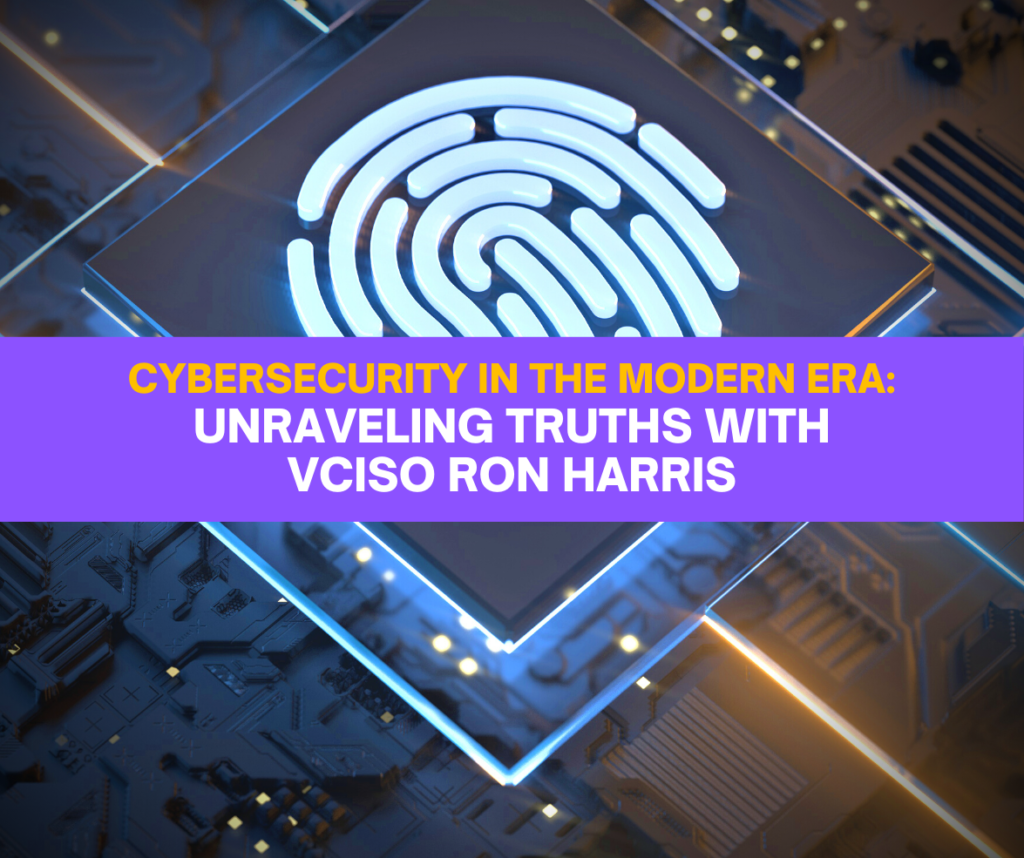In the digital age, we’re often lulled into a false sense of security by the myriad of tools and software available at our fingertips. This was the poignant theme of a recent episode of “Where Humanity Meets Technology” I decided to dive deep into interviewing Cybersecurity CISOs. I discussed cybersecurity best practices with Ron Harris, an eminent Virtual Chief Information Security Officer, and a CISSP-certified maestro.
The conversation painted a holistic picture, acknowledging our cybersecurity strides yet emphasizing the need for vigilant adaptation. As Ron succinctly put it, “Our technological defenses, potent as they may be, are perennially under siege. Their strength lies in their adaptability and not in their perceived invincibility.”
The Double-Edged Sword of Antivirus Software

While antivirus software remains a mainstay in our defensive arsenal, Ron highlighted an unsettling reality: these tools aren’t impregnable fortresses. Advanced persistent threats (APTs) and zero-day vulnerabilities can sometimes outmaneuver them. Malware can be masked, obfuscated, or repackaged to slip through the most robust antivirus solutions. But this doesn’t negate the pivotal role of antivirus solutions. When regularly updated and complemented with other security measures, they act as formidable barriers against a vast array of threats.
VPN: The Shield with Chinks
Virtual Private Networks (VPNs) have been widely heralded for their capacity to cloak online activities, providing an added layer of security. However, our dialogue drew attention to potential vulnerabilities. VPNs, especially those that aren’t maintained or those using outdated protocols, can be susceptible to breaches. Despite these vulnerabilities, Ron quickly noted the overarching importance of VPNs. “In a world of increasing surveillance and cyber-attacks, a good VPN still stands tall as a protector of user privacy and data security,” he remarked.
The Bedrock of Enterprise Networks: Active Directories
Our conversation took a deep dive into the world of active directories, emphasizing their central role in managing and organizing an enterprise’s IT infrastructure. Ron stressed the crucial nature of these systems: “Active directories are the backbone. If they’re compromised, the entire system can crumble.” Ensuring their security involves regular audits, applying the principle of least privilege, and monitoring for suspicious activities. A breach in the active directory isn’t just a data loss; it’s a potential compromise of the entire organizational network.
The Indispensability of a Multifaceted Incident Response Team
One of the most pivotal aspects of our discussion with Ron Harris was emphasizing the strategic importance of a well-structured Incident Response (IR) team. In an era where cyber threats are multifaceted and constantly evolving, reactive measures are just as crucial as preventive ones. Ron elucidated, “When a breach or incident occurs, the response time and effectiveness can significantly determine the severity of its impact.” An optimal IR team is not just about having IT specialists but a holistic ensemble that includes C-Level executives, IT Administrators, Threat Intelligence teams, Forensic Analysts, Media Personnel, and Legal Counsel. Each member brings a unique perspective and skill set:
C-Level Executives provide decision-making authority and ensure alignment with organizational goals.
IT Administrators offer an in-depth understanding of the infrastructure, ensuring rapid containment of threats.
Threat Intelligence Teams provide insights into the nature of the threat, helping mitigate and prevent future similar attacks.
Forensic Analysts delve deep into the breach, understanding its origin and method and suggesting ways to bolster defenses against such threats.
Media Personnel manage public relations, ensuring transparency and managing the organization’s reputation during crises.
Legal Counsel ensures that all responses comply with legal mandates, reducing potential liabilities.
As a vCISO, Ron underscored the importance of predefined policies and procedures that every member of the IR team has acknowledged. In moments of crisis, a well-drilled team, acquainted with their roles and responsibilities, can operate seamlessly, minimizing damage and ensuring rapid recovery. “It’s akin to a symphony,” Ron mused, “Each player knows their part by heart, and when played in tandem, the music – or, in this case, the response – unfolds flawlessly.”
In wrapping up our session, it became evident that while the tools and systems we rely upon have their vulnerabilities, their strategic and informed deployment remains our best line of defense. As technology evolves, so do threats, and our conversation with Ron Harris was a clarion call for persistent vigilance, continuous learning, and proactive adaptation in the ever-shifting landscape of cybersecurity.

